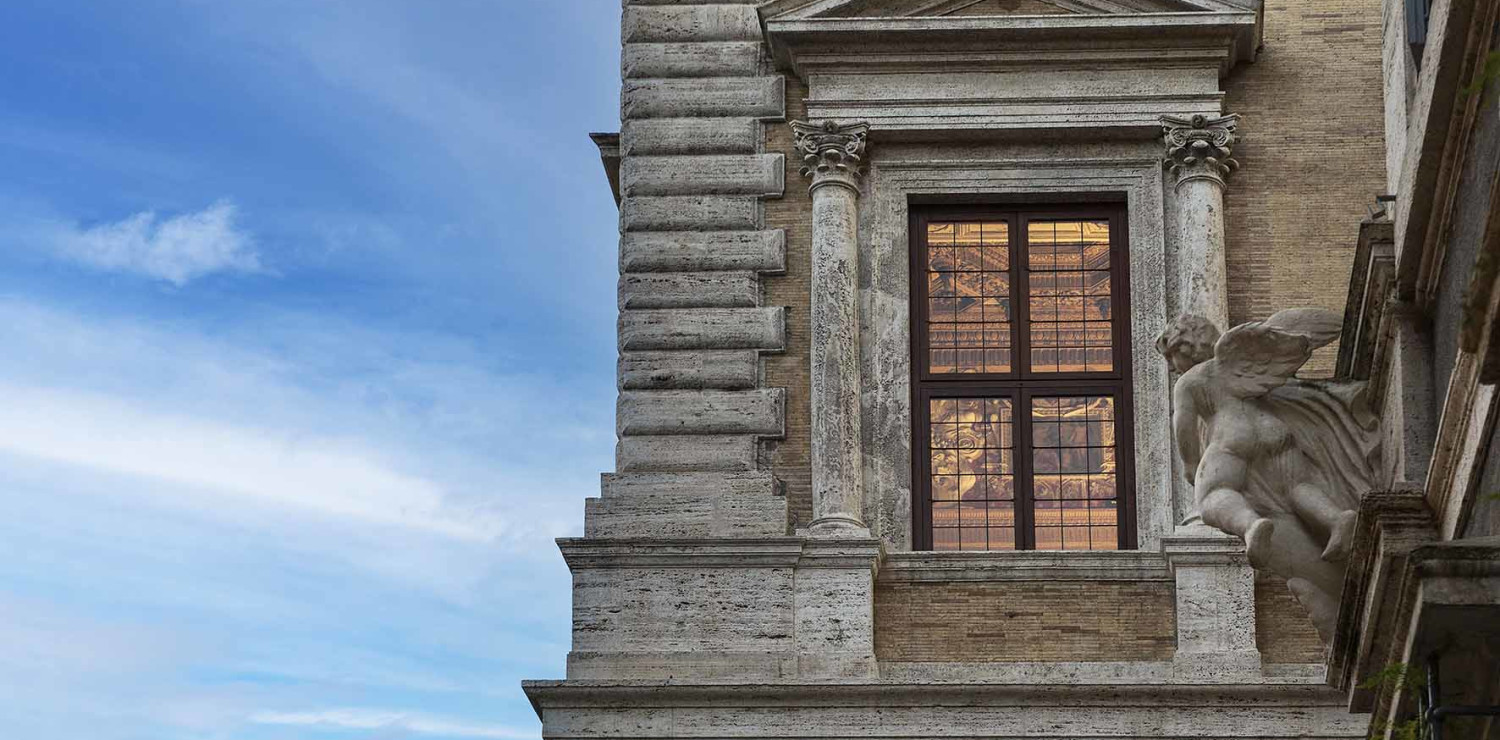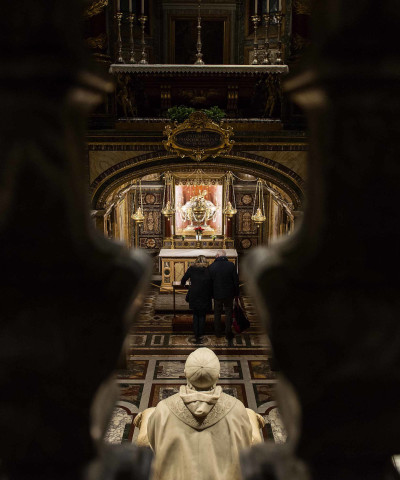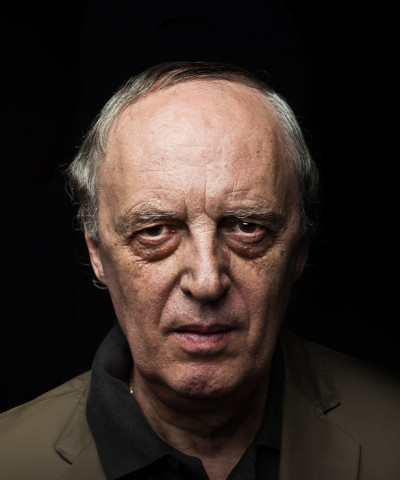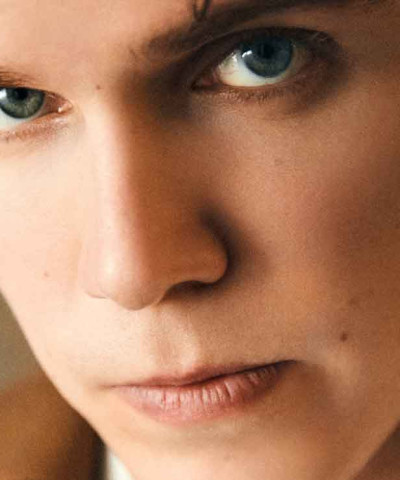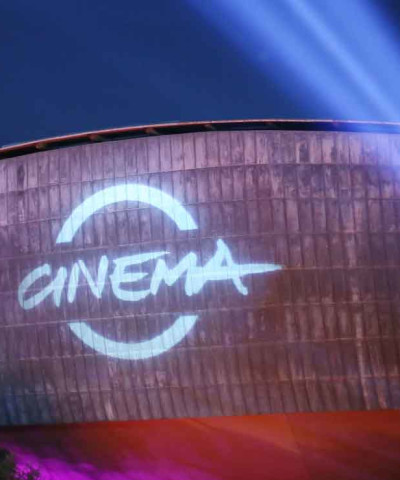Rome as seen from Palazzo Farnese
Our interview with French Ambassador Martin Briens
Strongly desired and always on the move, Palazzo Farnese has dominated the Roman piazza that goes by the same name with grace and elegance since the 16th century. France’s diplomatic seat at the Quirinale since 1874, and the prestigious home to the French ambassador, it is the main star of a good share of the cultural, political and international sociality of each day that boasts the Eternal City as its backdrop.
Its emblazoned presence just a stone’s throw from Campo de’ Fiori (a popular agora with its picturesque local market and the evening movida generated by the ring of clubs surrounding the monument to Giordano Bruno) reminds everyone that this is what Rome is: a city where everything overlaps and that the antithesis is nothing but a space for dialogue and coexistence. And indeed, the joys of antiquity and the pleasures of the contemporary happily coexist in the Palazzo Farnese, an extraordinary container of art and relations, with the monumental Salone d’Ercole always open for special meetings on topics of common interest to France and Italy, developed over the past two years also on the basis of the Quirinale Treaty, tightened for enhanced bilateral cooperation: 18-metre-high ceilings, imperial busts, 17th-century tapestries (Gobelins Manufactury), and the two allegorical virtues - Abundance and Charity, sculpted by Guglielmo della Porta on either side of the polychrome marble fireplace by Vignola. These clues alone would be enough to understand the depth of the building, but there is more; for example, the frescoes of the enchanting Galleria dei Carracci by the brothers Annibale and Agostino Carracci between 1597 and 1608 that have made this place famous, originally intended for the private and representative walk of the Palazzo. Painted on the vault is the theme of the Loves of the Gods (inspired by Ovid’s Metamorphoses), a work that gives the likeness of Bacchus and Ariadne the profiles of Ranuccio Farnese and his bride Margherita Aldobrandini, niece of Pope Clement VIII. Overlooking the garden is the cinema hall used for previews and annual editions of Rendez-vous, the Festival of New French Cinema. On the piano nobile, the Murano Gallery, illuminated by large crystal chandeliers, becomes the ideal setting for galas, cocktail parties and art and fashion events such as /gal-le-rì-a/, the site-specific project by artist and designer Sylvio Giardina. A substantial portion of wonder is reserved especially for the Hall of the Fasti, today the study of the ambassador and parterre of the ceremonies for the awarding of honours by the French state, the most coveted being the Légion d’honneur. The ceiling must not be missed; it was probably signed by Sangallo, the oldest in the palace, nor must the fresco decoration created between 1557 and 1563 by the Florentine artist Francesco Salviati to illustrate the splendour of the Farnese family.
 Galleria Caracci
Galleria CaracciThe current tenant of Palazzo Farnese is the French ambassador to Italy Martin Briens, who arrived in Rome in July 2023.
Ambassador Briens, it is a real privilege to observe Rome from the windows of Palazzo Farnese.
“Of course. When I arrived, I started to walk through the rooms amazed by so much beauty, and I got emotional thinking about the architects and artists who have passed through these walls: Sangallo, Michelangelo, della Porta, Zuccari, Salviati, the Carracci brothers, and many others... But I also want to project myself outside the ‘Farnese nut’, to get to know Rome and its neighbourhoods even better, full of this mighty beauty. I often go out to mingle with the Romans, to understand their culture that has been built up over many centuries and yet is always so present in their daily lives.”
What are your favourite places in the city?
“Rome has so many cultural opportunities to offer. I prefer music and follow concerts a lot, but I am also curious about live performances, for example those offered during the Romaeuropa Festival. I admire the Galleria Borghese, where I was recently: a concentration of art which is also open to the contemporary. Museums and institutions are full of cultural vivacity and openness to new worlds. I decided to go on a real tour of Italy: and everywhere, in Rome like in all regions, I was greeted by a warm welcome, and of course delicious food. Your cuisine is pure poetry.”
Inside Palazzo Farnese, is there a place that you love?
“There are many places and works that touch me. To date, I would still say the Terrace. As well as giving an unprecedented view of the rear façade, with the loggia designed by Michelangelo, it has a special poetry, especially at sunset when the stone takes on a colour somewhere between orange and gold. It was designed to connect the palace to the Villa Farnesina on the other side of the Tiber. This was not the case, but it remains a fundamental part of the building, and from the Via Giulia many people stop to photograph this ‘bridge’. For me though, it is still the time of discovery, and I would like it to be that way for a long time: to get to know the Palazzo, little by little and in detail, from the courtyard to the garden, from the Galleria dei Carracci to the Sala dei Fasti that I am lucky enough to have as an office.”
Every 14 July for the French National Holiday, all eyes are on the courtyard designed by Michelangelo, which is filled with guests, music and institutional rituals: the reception, a must for those who aspire to breathe in the cosmopolitan air of the capital, also traditionally involves the community of French citizens living in Rome.
Glimpses of Grand Tours have always enveloped the Palace, where the ‘liturgy’ of the must-see destination continues to be celebrated: every year, at least 50,000 visitors rely on the most exclusive guided tours or events to be able to visit a universally iconic site. Among the attractions rightfully on the wish list, one place is occupied by the École française library, the largest French collection of books (215,000 dedicated to research) outside France. From a concentration of masterpieces to an artist’s canvas: the French Embassy has also resoundingly entered the Olympus of JR, a French photographer and street artist who, after changing the face (temporarily) first of the Palazzo Strozzi in Florence and then of the Palais Garnier in Paris (home to the Opera), worked on the Renaissance façade in July 2021 with his monumental work Punto di Fuga (Vanishing Point). The trompe-l’oeil of over 600 square metres thus became part of the artistic enhancement programme of the restoration of the facades and roofs of Palazzo Farnese. Imperative for the Embassy, which has also invited other Italian and French artists to enliven the site, is in fact to keep the Palace ‘open for business’ during the entire duration of the work.






